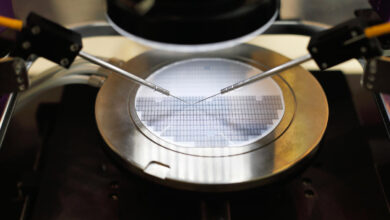Is Artificial Intelligence Going to Take Over Agriculture?

Artificial intelligence is everywhere these days. It is being used to create logos, write transcriptions of events and interviews, and complete the homework assignments of students around the world. At first thought, it might not seem like artificial intelligence (AI, not to be confused with artificial insemination) has much of a place in agriculture. But there are many ways that AI is being used in ag, including in crop production, raising livestock, food production and processing, and more. The next question is, will AI take jobs away from those working in ag?
What is artificial intelligence, and how does it work?
Artificial intelligence algorithms are modeled after the human brain, meaning that they can “learn.” One goal of artificial intelligence is to mimic human cognitive activity. A subset of artificial intelligence is machine learning, the concept that computer programs can automatically learn from and adapt to new data without being assisted by humans.
At its basis, AI is input provided to a processor, which produces an output. One example of machine learning would be providing an AI system with a photo of corn and telling it that the image is of corn. You can feed your system thousands of images of corn and tell it that the image is of corn. Eventually, the system will be able to tell you with certainty whether an image (different from the ones you have previously shown the AI) is of corn or not. This is an example of one of the uses of AI in agriculture. Some helpful AI tools in agriculture are apps, robots, and drones that can identify weeds. All you need to do is use the camera on your phone to see what type of weed or plant you are looking at. Some of these systems can also recommend how to control that weed and where to go for more information.
AI is also used to create autonomous robots that can drive through fields and identify and control weeds. These robots can also identify diseases and insects, take soil samples, and even spray or mechanically remove weeds that they identify. So far, these robots are still being researched, but they have the potential to replace some of the technology and labor currently used in agriculture. These types of multifunctional AI robots are still a long way out from being usable and affordable for the average farmer.
AI is also being used in livestock production. One example is using a camera on a drone that can be flown over a herd of cattle. AI systems can look at the footage captured by the drone and count and inventory the herd of cattle. This could save farmers time and labor, as they would no longer have to go out and physically count their cattle. AI is also being used to look at thermal images of cattle and recognize bovine respiratory disease at its early stages.
AI also has potential uses in food processing. Currently, work is being done on AI systems that can grade the quality of pork by looking at color and marbling (which is normally done by people). There is also the potential for better food tracking and management on the consumer side.
There’s also a lot of research being done about AI in agriculture. The USDA’s National Institute of Food and Agriculture (NIFA) is even funding AI research in many areas of agriculture. Some examples include using machine learning, remote sensing, satellite imagery, drones, and precision technologies for more informed farm production and management.
There is also research into autonomous robots that could perform labor-intensive jobs like pesticide application and harvesting. There are even nano-based sensing mechanisms and smart sensors being developed that could provide accurate, reliable, and cost-effective detection of pathogens, chemicals, and contaminants in foods, on farms and ranches, and in water and soil. AI also has the potential to help on the business and economics side of ag. Farm managers can use AI to help them make decisions, improve efficiency, and more. AI can also help us understand and develop international trade, ag resource use, consumer behavior, food safety, ag policy, technology development, and more.
Will AI take away jobs in ag?
New technological advances have historically automated and taken away jobs, especially factory positions. You might have heard about how AI has the potential to take over jobs, especially positions like writers, web developers, bookkeepers, judicial clerks, and similar positions. However, many businesses have a hard time finding qualified employees, so this could eliminate some employment pain points for the industry. As of 2022, 19% of American workers held positions in this category of jobs at high risk of being exposed to AI.
AI has the potential to take over jobs in ag, but many of these positions are a long way out from being overtaken by AI. It’s also hard to tell for sure what jobs and when will be taken over by AI. It will also take more new jobs to set up AI systems and complete more research into AI. It’s much more likely that instead of taking over jobs, AI will help agriculture as a whole.
The average age of farm producers has been rising, and in 2017, the average age of a farmer or rancher was 57.5 years old. New technology, including AI, can help aging producers and make their jobs easier. AI can also help ag by increasing efficiency and productivity, increasing sustainability, and helping producers make more informed decisions. AI has the potential to change agriculture, but the heart of ag will always be the people.


